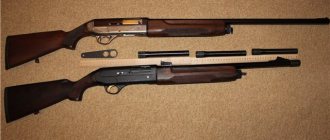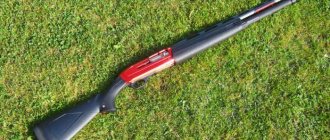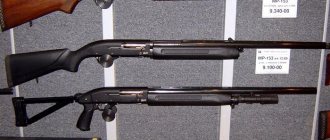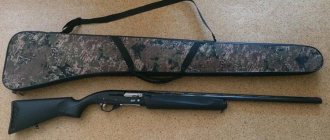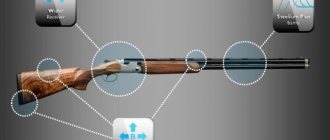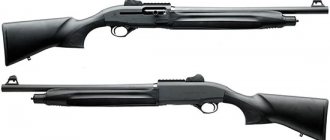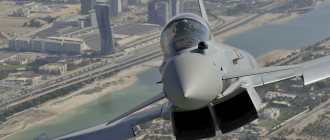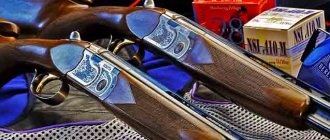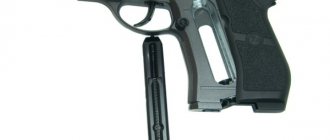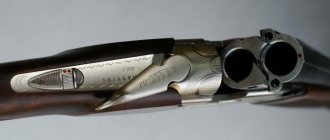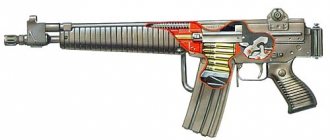Products developed at the factories of the Italian arms company Beretta are known to all arms lovers. In addition to pistols produced by this company, which are widely distributed throughout the world, Beretta also develops hunting weapons. One of the most popular hunting rifles of this Italian company is the Beretta ES100, which is also popular among Russian hunting enthusiasts.
Description of the gun
The Beretta ES100 hunting rifle, like all Beretta smoothbore weapons, is produced at the company's main plant in the Italian city of Brescia. The barrel of the weapon is made from a light alloy of chromium, nickel and molybdenum, and then chrome plated. The bolt box, the heart of any small arms, is also made from the same alloy.
The manufacturer provides 4 barrel options of different lengths. The barrel of the gun is equipped with choke constrictions. These devices are designed to improve shooting accuracy. The design of the gun includes a push-button safety device located on the rear of the trigger guard. There is a ventilated strip for mounting the collimator.
Shooting from the Beretta is carried out with 12-gauge cartridges. The weapon's magazine holds four of these rounds, and one more can be placed directly into the barrel.
Operating principle
The Beretta ES100 is a semi-automatic repeating shotgun. When a shot is fired, the Beretta bolt moves forward along movable guides, which are located on the cover of the bolt box due to the action of kinetic recoil energy, compressing the spring. The spring then relaxes, causing the bolt to move back. At this moment, the spent cartridge case is ejected from the chamber. As a result of spring compression, a slight delay in the operation of the shutter may occur. This allows you to use cartridges of different power when shooting.
You will be interested! Reliable semi-automatic shotgun Beretta AL391 Urika
When in its rear position, the bolt begins to move forward due to the action of the return spring. The bolt is lifted by the feeder, after which the cartridge is chambered. After the cartridge enters the chamber, the bore is locked by the bolt using a wedge.
Beretta ES100 Max-4 camo
Loading weapons occurs according to the following algorithm:
- First, the safety button is moved so that it covers the red ring depicted around it;
- Then you need to press the feed button, which is located on the right side, and manually move the shutter to the forward position;
- After this, you need to place the ammunition in the magazine;
To discharge the Beretta ES100, you must follow these steps:
- The bolt must be moved back, the cartridge removed and returned to its original position;
- Then you need to move the feeder inside the receiver, thereby pressing the cartridge stopper. After this action is completed, the cartridges will come out of the gun one after another;
- After making sure that there is no ammunition, you need to pull the trigger, thereby completing the unloading of the weapon.
To clean the gun, a special brush made of bronze, lubricated with gun oil, and a rag are used. Immediately after cleaning, it is advisable to lubricate all surfaces of the barrel: both internal and external. It is recommended to lubricate the bolt and trigger mechanism after every 500 shots and before the start of the hunting season.
When lubricating the weapon, special attention should be paid to the feeder latch. If this part malfunctions, the movement of the shutter becomes difficult. In turn, if the shutter movement is difficult, problems with the weapon’s automation may arise.
Ejector
To increase the rate of fire, the Beretta Ultralight has an ejector. In weapons where an extractor is installed, spent cartridges only move out of the chambers; they must be removed independently. In the Ultralight, only unfired cartridges are ejected by the ejector, and spent cartridges are ejected, which leads to the loss of the latter, especially if there is water around. But recharging time is reduced.
The ejector is less reliable in operation than the extractor and requires special care; it is not always possible to buy a cleaning agent in any store. And one more disadvantage of the ejector: guns equipped with it are more expensive.
Gun design
The Beretta ES100 action consists of five parts:
- Gate frame;
- Inertial spring;
- Combat guise;
- Locking wedge;
- Handles.
Beretta ES100 Wood
The barrel bore is locked with a special wedge, which rests against the receiver cover when moving. Unlike Benelli shotguns, the Beretta ES100's combat face is not rotatable. There are also no lugs for attaching the cylinder to the barrel. The gun barrel is attached to the receiver cover, made of steel. The use of such technology increases the impact, while allowing you to maintain a stable rollback speed.
Important: To attach the trigger mechanism (trigger mechanism) to the Beretta, a hollow tube made of metal is used. If this part is removed repeatedly, there is a risk of it flaring, which can cause problems during its installation.
When disassembling the gun, the remaining parts of the gun connected to it are separated from the receiver. Thus, the operation of the weapon is simplified, since the trigger mechanism (trigger mechanism) does not need to be removed for inspection and lubrication.
The Beretta magazine is non-separable, although it can be cleaned and lubricated. The return spring is located in the butt of the weapon, which provides it with the following advantages over its competitors:
- Improved weight distribution;
- Lightening the spring itself. This same property implies the need to more carefully calibrate the sleeves.
It should also be noted that the Beretta ES100 magazine does not have a magazine release. Thus, unloading the gun magazine is possible only with the help of a cartridge limiter, with which the feeder latch is combined. The latch moves in both the transverse and longitudinal planes. Thus, if a misfire occurs, chambering the next cartridge will be difficult, and you will have to remove the misfired cartridge manually
The Beretta ES100 shotgun is equipped with a tubular magazine. The magazine holds 4 cartridges with a 70 mm sleeve, and the cartridges are fed exactly in the order in which they are placed in the magazine. If a larger sleeve is used, the magazine capacity is reduced by one cartridge.
It should also be noted that testing of gun automatics can only be done using dummy cartridges. The use of live ammunition during such an operation is unacceptable.
Beretta ES100 Synthetic
Semi-automatic "Beretta ES-100"
By creating the Beretta ES-100 model, Italian gunsmiths, in principle, returned to the type of automation, to a certain extent repeating the automation of the Sjogren shotgun. Although, of course, these two guns differ in design, their operating principle is almost identical. And it is somewhat different from the principle inherent in a semi-automatic machine.
GUN DESIGN
The bolt of the Beretta ES-100 shotgun consists of a frame, a buffer spring, a combat cylinder, a locking wedge and a control handle. The barrel bore is locked by a wedge swinging in a vertical plane, which interacts with the receiver cover body in its lower part. As you can see, there is no rotating combat cylinder interacting with its two lugs with grooves in the breech of the barrel, characteristic of weapons. In terms of its layout, the Beretta ES-100 shotgun is most similar to the Super Black Eagle model. The barrel of the gun is rigidly attached to the steel cover of the receiver. The barrel length is 71 cm, there are replaceable choke tubes.
The receiver itself is made of alloy. When disassembling the gun, the barrel, together with the cover and bolt, is separated from the receiver. This scheme allows you to simply service the trigger mechanism of the gun during cleaning, since there is no need to remove it from the receiver every time. For this model this is a very important point, because As a fastening element for the trigger in the receiver, not a standard solid steel pin is used, but a hollow metal tube. If this tube is repeatedly knocked out, it may become flared, which may cause problems with its installation. It also makes it easier to maintain the bolt return spring, which is located in the gun stock, and the feeder latch mechanism.
The design of the under-barrel magazine of the Beretta ES-100 shotgun completely copies the design of the magazine of such semi-automatic models as "Raffaello", "Moncino", ". Magazine capacity: 4 cartridges with a case length of 70 mm and 3 cartridges with a case length of 76 mm.
The design features of the magazine and its mounting in the receiver are such that it is practically non-separable. Although there is an opportunity to lubricate its spring and wash it from dirt. Placing the bolt return spring in the stock of the Beretta ES-100 shotgun has its advantages over the design with a spring on the under-barrel magazine.
Firstly, although slightly, the weight distribution of the gun is improved.
Secondly, by placing the return spring on the tube of the under-barrel magazine, designers strive to make it as light as possible, fighting for the same weight distribution. The spring turns out to be relatively light, but weaker than the spring located in the stock. This leads to the fact that a gun with a return spring on the tube of the under-barrel magazine is more demanding when it comes to calibrating cartridges. When reusing cartridges and loading cartridges yourself, careful attention must be paid to the calibration of cartridges and cartridges. Otherwise, there may be delays when firing due to the cartridge sticking. So in the Beretta ES-100 model, all these problems are structurally minimized. And the weight distribution of the Beretta ES-100 model shotgun is not much different from the Beretta AL 391 Urika model.
The design of the shutter is original and at the same time functional and simple. The bolt slides along guides in the steel barrel cover, and its locking wedge interacts with a bridge at the bottom of the cover. The result is a “steel on steel” locking.
When the gun is not completely disassembled, the bolt is held in the cover in the front position by the combat stop, and in the rear position by the bolt handle. It is impossible to remove the bolt handle from its frame without complete disassembly, which eliminates its loss if installed incorrectly. The entire design of the bolt is such that if it is assembled incorrectly after cleaning, it is impossible to install it in the receiver cover.
The cartridge deflector in this gun is installed in the lower part of the receiver cover and is not spring-loaded. But forcibly removing the cartridge from the chamber is easy.
The barrel is equipped with interchangeable Beretta Optima choke tubes and is made in Italy, as evidenced by their markings. The quality of the barrel is very high.
The gun's safety is a push-button type and is located on the rear of the trigger safety bracket.
There is no magazine cutter in the gun. The magazine can be unloaded through the cartridge limiter.
In order to understand the principle of operation of a gun’s automation, it is necessary to use dummy cartridges and in no case live ammunition. A very important role in the operation of the automatic gun is played by the feeder latch, which is combined with the cartridge limiter.
FEATURES OF GUN CONTROL
In order to load the gun, you need to retract the bolt, insert a cartridge into the receiver cover window and press the feeder latch button. The cartridge will be sent into the barrel. Then press the feeder latch button and slide it back (towards the stock), and the latch will be locked with the outer side of the feeder. The feeder will unlock, allowing the magazine to be loaded. If you do not lock the feeder latch button in the rear position, but simply press it and send the cartridge to the magazine, then as soon as you release the button, the cartridge will immediately be sent from the magazine to the feeder. After loading the gun, you can start shooting. A special feature of the Beretta ES-100 model shotgun is that it is not easy to understand the logic of the automatic operation without actually shooting. The reason is that the feeder latch in this gun is capable of moving not only in the transverse direction relative to the axis of the gun, but also in the longitudinal direction under the influence of inertial forces. The ability of the latch to move in the longitudinal direction allows you to turn on the supply of the second cartridge from the magazine after the first shot. It follows from this that if the first shot misfires, then getting the second cartridge from the magazine into the barrel will be problematic. You will have to remove the misfired cartridge from the barrel by jerking the bolt, and throw a new cartridge into the receiver window. But it must be remembered that with all these manipulations the bolt will not be locked in the rear position by the feed lever, which, you see, is inconvenient.
You yourself can simulate this delay after loading the gun with dummy guns. Place one dummy cartridge into the barrel, and another dummy into the magazine and release the trigger. You will see that in this case the feed from the magazine will not be turned on, and jerking the shutter will also not lead to anything.
In order to submit a layout from the magazine, you need to move the latch button from the rear position to the front. This will require some effort, since the cartridge stop will rest against the second dummy cartridge and the force of the magazine spring will resist your actions. As soon as the feeder latch button is in its normal place in the forward position, the cartridge will be fed from the magazine to the feeder tray. When operating with mock-ups, do not load more than one mock-up into the magazine; this is enough to understand the logic of the gun’s automatic operation.
The bolt of the gun is fixed in the rear position after the cartridges run out. If there are cartridges in the gun magazine, the bolt does not lock in the rear position.
It is necessary to monitor the proper operation of the feeder latch. This is especially true for its contamination, since in this case longitudinal movement will be difficult. As a consequence of this, the automation fails. Do not use thick lubricants (cyatim, OKB, etc.) or barrel preservation lubricants to lubricate the latch and its spring; it is easier and better to use WD-40, especially in winter.
A LITTLE ABOUT THE THEORY OF AUTOMATION OF THE BERETTA ES-100 SHOTGUN
Since the Beretta ES-100 shotgun operates on the inertia of the bolt parts, certain questions arise:
At what point and under what conditions does the shutter open?
Could it happen that the bolt opens before the shot leaves the barrel?
In the Beretta ES-100 shotgun, at the initial moment of the shot, the bolt not only does not tend to open the barrel, but, on the contrary, connects (locks) to it even more firmly. Locking will continue as long as the recoil force is active.
The question of whether it is possible to unlock the bore before the shot leaves it is resolved positively. For example, when a Sjögren shotgun was rested with its butt on the felt and a shot was fired, the barrel bore was unlocked when the shot shell was 1 m 20 cm from the muzzle of the barrel. For the automatic action of the Beretta ES-100 shotgun, it is necessary that the back of the butt had elastic stop.
The automatic gun should not function in two cases:
The gun is hung freely.
The gun is placed with the butt of the butt against a hard surface.
A freely suspended gun cannot operate, since the recoil, and with it the inertia of the bolt, decreases gradually.
In the same way, the automatics of a gun placed with the back of the stock against the wall cannot operate, since the frame of the bolt, due to the lack of recoil of the entire gun, will not first move forward and then move backward under the action of the buffer spring and will not ensure that the combat cylinder moves away from the breech end of the barrel .
In this model of gun, the movement of the bolt undergoes changes depending on the resistance that the gun encounters during recoil. The duration of the individual phases of movement of the mechanism also depends on this resistance.
In short, the time at which the bolt begins to recoil will depend on the mass of the shooter, the force with which he holds the gun, and the power of the cartridge.
This is what makes the Beretta ES-100 shotgun fundamentally different from any semi-automatic rifle.
In Benelli weapons, the compression force of the buffer spring is limited by the pattern groove of the bolt frame and the combat cylinder liner. Accordingly, the recoil speed of moving parts in Benelli weapons is stable, regardless of the above factors, and especially the power of the cartridge.
But you have to pay your toll for a stable rollback speed of moving parts. Recoil in the Benelli weapon is perceived less comfortably than in the Beretta ES-100 shotgun, especially when using magnum cartridges. This happens because the heavy bolt frame of the Beretta ES-100 shotgun is limited in its forward movement only by the force of the buffer spring. And in Benelli weapons, the mutual movement of the bolt frame relative to the rotating cylinder is limited by the movement of the liner in the straight part of the copier groove and is equal to approximately 4 mm. It turns out that the bolt core in the Beretta ES-100 shotgun with more powerful ammunition travels forward during recoil a greater distance and thus dampens this recoil to a greater extent (the action of the bolt core is similar to the action of a recoil absorber).
Of course, the compression force of the buffer spring also increases, and the speed of rollback of the moving parts after unlocking the barrel increases. Consequently, the shock loads on the structural elements of the Beretta ES-100 shotgun are higher than in the Benelli semi-automatic rifle.
In fact, during real shooting, the Beretta ES-100 shotgun shows high reliability. Due to its weight characteristics (gun weight 3.2 kg), this model is absolutely suitable for most hunting. The Beretta ES-100 shotgun is available in various versions: with a traditional walnut stock, in a camouflage version and in a “Synthetic” version. I would like to note the good quality of the gun as a whole, very good weight distribution, and original design. And, of course, the price-quality ratio of the Beretta ES-100 shotgun is at a very high level.
Civil engineer July 6, 2005 at 00:00
Advantages and disadvantages
The advantages of this weapon model include the following points:
- Low recoil, making the gun easier to shoot;
- Manufacturability and ease of maintenance;
- Possibility of using a variety of types of 12-gauge ammunition, including domestically produced ones;
- Light weight of the gun;
- High quality barrel manufacturing.
However, this model has the following disadvantages:
- Inconvenient location of the safety button;
- The difficulty of installing a collimator sight due to the specific design of the ventilated mount;
- There are only three types of choke constrictions for Beretta barrels.
Appearance
This model range features an updated exclusive design. The engraved animals are surrounded by original “airy” motifs, which, according to the Italian designers, should emphasize the light weight of the gun. The same idea can be seen on the notch.
Classic beauty and elegance are enhanced by the gold-plated trigger, beak-shaped forend, and premium walnut stock.
All together gives the gun an exceptional modern design, distinguished by its solidity and attractiveness.
Operating the Beretta ES100
Inertial shotguns are very popular among Russian hunters. Such weapons are used to hunt a wide variety of animals: from ducks to large artiodactyls.
Important criteria for hunting weapons are the accuracy and accuracy of bullet shooting. When shooting with shot at a distance of 35 meters from a sitting position using a muzzle constriction, the recoil is less severe than that of guns with a rotating combat face, good accuracy and uniform scree. After using a bullet weighing 42 grams, the shooter felt stronger recoil than when shooting with shot. Also, when firing such ammunition, a high rate of fire accuracy is achieved.
Beretta ES100 Synthetic White
Specifications
The Beretta ES100 hunting rifle has the following technical characteristics declared by the manufacturer:
- Caliber: 12x76;
- Barrel length: 610, 660, 710 or 760 mm;
- Length of the entire gun: 1245 mm;
- Magazine capacity: 4 rounds. The fifth cartridge can be placed directly in the bore;
- Reloading system: inertial;
- Weight: 3300 grams.
- Materials used in production: walnut wood, light alloys of chromium, molybdenum and nickel, plastic.
Bed
When choosing a gun, you need to pay special attention not only to the barrel, but also to the stock. The insertion of metal elements into wood should be without gaps, neat and thorough. There can be no cracks in the stock; the layers of wood are longitudinal.
To make the stock, the manufacturer uses exclusively high-quality wood, namely impregnated perennial walnut. The gun has a noble appearance and is very pleasant to hold in your hands.
The black rounded butt pads on the stock are mostly rubber. When quickly throwing up with this gun, hunters often do this, there is no risk of ruining their equipment.
